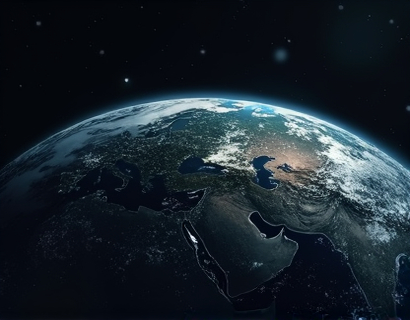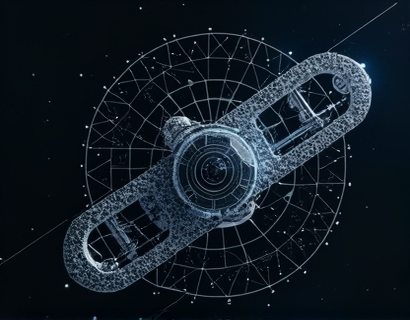Unlocking the Hidden Patterns: Exploring the Intersection of Science and Mathematics to Reveal the Universe's Mysteries
The universe, in all its vastness and complexity, holds secrets that have captivated human curiosity for millennia. At the heart of uncovering these secrets lies the profound intersection of science and mathematics, two disciplines that, when combined, offer a powerful lens through which we can explore and understand the cosmos. This article delves into the hidden patterns and connections that emerge when science and mathematics converge, revealing the profound secrets of the universe and sparking a deeper curiosity in both science and math enthusiasts.
The relationship between science and mathematics is not merely one of utility but of fundamental interconnectedness. Mathematics is often described as the language of the universe, a universal tongue that transcends the boundaries of time and space. It provides the framework within which scientific theories are formulated, tested, and validated. The precision and rigor of mathematical reasoning enable scientists to model complex phenomena, predict outcomes, and uncover the underlying laws that govern the natural world.
Mathematics as the Foundation of Scientific Inquiry
From the earliest days of scientific exploration, mathematics has played a crucial role. Ancient civilizations used geometric principles to construct monumental architecture and understand celestial movements. The Greeks, particularly figures like Pythagoras and Euclid, laid the groundwork for mathematical thinking that would influence scientific inquiry for centuries to come. The Pythagorean theorem, for instance, is not just a geometric principle but a fundamental tool in physics, engineering, and beyond.
In modern science, mathematics is indispensable. Physics, the study of the fundamental forces and particles that make up the universe, relies heavily on mathematical models. Newton's laws of motion and gravitation, for example, are expressed in mathematical equations that describe the behavior of objects under various forces. These equations allow scientists to predict the trajectories of planets, design spacecraft, and understand the dynamics of the cosmos.
Complex Theories and Real-World Phenomena
The intersection of science and mathematics becomes particularly fascinating when exploring complex theories that explain real-world phenomena. One such theory is the theory of relativity, proposed by Albert Einstein. This theory, which includes both special and general relativity, revolutionized our understanding of space, time, and gravity. The mathematical framework of differential geometry and tensor calculus is essential to formulating and understanding the implications of relativity.
General relativity, in particular, describes gravity not as a force but as a curvature of spacetime caused by mass and energy. The famous equation \( G_{\mu\nu} = \frac{8\pi G}{c^4} T_{\mu\nu} \) encapsulates this idea, where \( G_{\mu\nu} \) is the Einstein tensor, \( G \) is the gravitational constant, \( c \) is the speed of light, and \( T_{\mu\nu} \) is the stress-energy tensor. This equation allows scientists to predict phenomena such as the bending of light around massive objects and the existence of black holes.
Quantum Mechanics and Mathematical Abstraction
Quantum mechanics, another cornerstone of modern physics, is equally dependent on advanced mathematical concepts. The behavior of particles at the quantum level is governed by wave functions and probability amplitudes, which are described using complex numbers and linear algebra. The Schrödinger equation, a central equation in quantum mechanics, is a partial differential equation that predicts how the quantum state of a physical system changes over time.
The mathematical abstraction of quantum mechanics has led to profound insights and technologies. Quantum entanglement, for instance, is a phenomenon where particles become interconnected in such a way that the state of one particle instantly influences the state of another, regardless of the distance between them. This concept, deeply rooted in mathematical theory, has practical applications in quantum computing and cryptography.
Interdisciplinary Connections
The intersection of science and mathematics is not limited to physics. Biology, ecology, and even social sciences benefit from mathematical modeling and analysis. In biology, population dynamics are studied using differential equations that describe how populations grow, decline, or stabilize over time. The logistic growth model, for example, is a mathematical representation that takes into account resource limitations and carrying capacity.
In ecology, network theory and graph mathematics are used to understand the complex interactions within ecosystems. Species interactions, food webs, and habitat connectivity can all be modeled mathematically to predict the impact of environmental changes and human activities. These models help conservationists and policymakers make informed decisions to preserve biodiversity and ecosystem health.
Mathematics in Cosmology and Astrophysics
Cosmology, the study of the large-scale structure and evolution of the universe, is another field where mathematics plays a pivotal role. The Big Bang theory, which describes the origin and expansion of the universe, relies on mathematical models of cosmology. The Friedmann equations, derived from Einstein's field equations, describe the expansion of the universe and the role of dark energy and dark matter.
Observational data from cosmic microwave background radiation, galaxy distributions, and supernovae are analyzed using statistical methods and mathematical algorithms. These analyses help cosmologists refine their models and test hypotheses about the universe's composition and fate. The precision required in these calculations underscores the importance of mathematical rigor in scientific research.
Mathematical Beauty and the Universe
The beauty of mathematics is often reflected in the elegance and simplicity of its principles, which can explain the most complex phenomena. This beauty is not just aesthetic but profound, revealing deep truths about the nature of reality. The mathematician and physicist Eugene Wigner famously described this as the "unreasonable effectiveness of mathematics in the natural sciences," a phenomenon that continues to intrigue and inspire.
Consider the Fibonacci sequence, a simple mathematical series where each number is the sum of the two preceding ones. This sequence appears in the growth patterns of many natural forms, from the spirals of sunflower seeds to the branching of trees. The golden ratio, derived from the Fibonacci sequence, is found in art, architecture, and even the proportions of the human body, suggesting a universal principle at play.
Challenges and Future Directions
Despite the successes of science and mathematics in explaining the universe, there are still many mysteries that remain unsolved. The nature of dark matter and dark energy, the unification of quantum mechanics and general relativity, and the search for a theory of everything are among the most pressing challenges. These questions drive ongoing research and innovation, pushing the boundaries of both fields.
Advances in computational power and data analysis are opening new avenues for exploration. Machine learning and artificial intelligence are being employed to analyze vast datasets, identify patterns, and make predictions that were previously impossible. These tools are not only enhancing our understanding but also revealing new questions and areas of inquiry.
Conclusion
The intersection of science and mathematics is a rich and dynamic field that continues to unveil the hidden patterns and secrets of the universe. Through the lens of mathematical reasoning, scientists can model, predict, and explain complex phenomena, deepening our understanding of the cosmos. As we continue to explore and push the boundaries of knowledge, the interplay between science and mathematics will remain a vital force in unraveling the mysteries of the universe.
For those who share a passion for these subjects, the journey of discovery is both rewarding and endless. Whether you are a student, educator, or simply someone with a curiosity about the world, delving into the intersection of science and mathematics can spark a lifelong fascination and a deeper appreciation for the beauty and complexity of the universe.










































